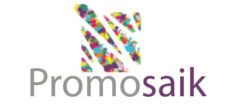By Ian Scales, Telecomtv, 30, April 2021
In the late 19th Century a chap called Zamenhof came up with the idea of ‘constructing’ a global second language – Esperanto – which everyone could learn so that they could converse with people who didn’t share their own, be they primary speakers of English, French or one of the 832 ‘living languages’ of Papua New Guinea.
Great idea, but enthusiasm for it didn’t last very far into the 20th century. One of the prime arguments FOR Esperanto was that its broad adoption would put everyone on a level playing field when it came to negotiating or persuading ‘across’ language boundaries. Which may well have been one of the reasons why it never really caught on with any group except internationalists and socialists (today they would be labeled ‘progressives’ or snowflake liberals etc). So the world eventually got English as a second language instead.
The ‘iconectiv TruOps Common Language’ is another constructed language but it is attempting to do something rather different. It’s about nailing down technical nomenclature and language with specific meanings so that all those who have to grapple with technical complexity can at least do so while singing from the same hymn sheet (to mix at least 2 metaphors). The similarity with Esperanto is that, rather than waiting for language and meaning to evolve organically, it puts definitions before usage and pushes the enter key.
IDC has just completed a white paper sponsored by iconectiv. The paper explains why it thinks this approach will play a major role in the evolution of networks which – as you have probably noticed – have over the past decade become more complex and abstract, with the advent of virtualisation, 5G, cloud, edge A.I. and more. In fact the concepts have become so demanding that even fully-immersed boffins can have a hard time working out what’s in front of them.
The IDC white paper “Common Language Drives Customer Value for All Network Technology: 5G/MEC and Virtualized Networking” author Karl Whitelock points out that while Common Language has been used by communications service providers for over 40 years, iconectiv TruOps Common Language was established to facilitate the service design and asset tracking needs of the operations and business management processes for prevailing and emerging network connectivity architectures.
Because it’s ably assisted network management processes over the decades, Whitelock says Common Language is expected to play a major role in the evolution and deployment of new facilities-based networks and the virtual aspects upon which these new technologies have come to rely. He says the paper “describes how a common naming strategy improves the effectiveness of real-time network operations and key business management functions and also explains how Common Language can bring increased awareness when defining, launching, and managing new network-based services.”
The greatest challenge facing asset-based CSPs, he says, is how to manage the physical and virtual assets that define the services they provide. He points out that understanding the physical and logical placement of assets is crucial for internal operations functions like network planning, inventory, service orchestration, catalog, activation, network assurance, service-level agreements (SLAs), policy, rating, and charging.
The multilevel construct of the underlay and overlay connectivity infrastructure and the E2E partner-aided services to customers of all types brings additional layers of asset tracking complexity that must be addressed by each of these business and operations management domains.
But the advantages of common language goes beyond the network operations. It provides a way to reliably report information to tax authorities, regulators, insurers and auditors who need regular reports of complex information. The only way to do this without inordinate expense and time-suck is to initiate an automated approach and that requires a standard naming and coding convention.
Having done so, the Common Language codes open up possibilities for a range of improvements such as tighter asset management capabilities by rooting out asset duplications, tightening up on inventory and combating fraud, rediscovering stranded assets and so on.
The White Paper makes out a compelling case for supporting a common language standards. You can download it here

